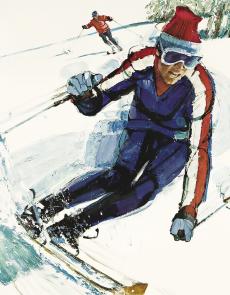SKIING HISTORY
Editor Seth Masia
Managing Editor Greg Ditrinco
Consulting Editor Cindy Hirschfeld
Art Director Edna Baker
Editorial Board
Seth Masia, Chairman
John Allen, Andy Bigford, John Caldwell, Jeremy Davis, Kirby Gilbert, Paul Hooge, Jeff Leich, Bob Soden, Ingrid Wicken
Founding Editors
Morten Lund, Glenn Parkinson
To preserve skiing history and to increase awareness of the sport’s heritage
ISHA Founder
Mason Beekley, 1927–2001
ISHA Board of Directors
Rick Moulton, Chairman
Seth Masia, President
Wini Jones, Vice President
Jeff Blumenfeld, Vice President
John McMurtry, Vice President
Bob Soden (Canada), Treasurer
Richard Allen, Skip Beitzel, Michael Calderone, Dick Cutler, Wendolyn Holland, Ken Hugessen (Canada), David Ingemie, Joe Jay Jalbert, Henri Rivers, Charles Sanders, Einar Sunde, Christof Thöny (Austria), Ivan Wagner (Switzerland)
Presidential Circle
Christin Cooper, Billy Kidd, Jean-Claude Killy, Bode Miller, Doug Pfeiffer, Penny Pitou, Nancy Greene Raine
Executive Director
Janet White
janet@skiinghistory.org
Membership Services
Laurie Glover
(802) 375-1105
laurie@skiinghistory.org
Corporate Sponsorships
Peter Kirkpatrick
(541) 944-3095
peterk10950@gmail.com
Bimonthly journal and official publication of the International Skiing History Association (ISHA)
Partners: U.S. Ski and Snowboard Hall of Fame | Canadian Ski Museum and Hall of Fame
Alf Engen Ski Museum | North American Snowsports Journalists Association | Swiss Academic Ski Club
Skiing History (USPS No. 16-201, ISSN: 23293659) is published bimonthly by the International Skiing History Association, P.O. Box 1064, Manchester Center, VT 05255.
Periodicals postage paid at Manchester Center, VT and at additional mailing offices. Postmaster: Send address changes to ISHA, P.O. Box 1064, Manchester Center, VT 05255
ISHA is a 501(c)(3) public charity. EIN: 06-1347398
Written permission from the editor is required to reproduce, in any manner, the contents of Skiing History, either in full or in part.
50th Year for Vermont Ski Academies
These on-mountain schools led the way in training and educating American ski racers.
It’s been nearly 53 years since Martha Coughlin conned her parents into letting her take her schoolwork on the road so she could spend the winter at Burke Mountain, Vermont, being coached by Warren Witherell. The success of her concept launched Burke Mountain Academy (BMA), followed, in quick succession, by Stratton Mountain School (SMS) and Green Mountain Valley School (GMVS). Today, skiracing.com lists 27 viable ski academy programs across the country and many more clubs that offer high-level, full-time ski racing programs. Despite competition from newer programs, as these first three ski academies reach their 50th anniversaries, they retain their character and innovative spirit.
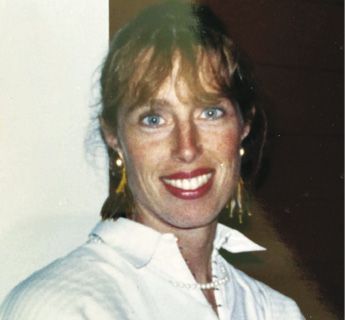
Martha Coughlin per-
suaded her high school
and parents to let her
take schoolwork on the
race circuit . . .

agreed to coach and
teach. Thus was born
Burke Mountain
Academy (top of page).
In the Beginning: Burke
In the fall of 1969, 14-year-old ski racer Coughlin was determined not to return to Massachusetts after training in ski country over Christmas break. So she called Witherell, an accredited teacher who had recently been lured to Vermont’s Northeast Kingdom by local ski racing families. In addition to coaching Lyndon Institute’s soccer team and St. Johnsbury Academy’s ski team, he trained local kids midweek at his newly created Alpine Training Center (ATC). He agreed that if Coughlin could find a place to live, she could join the ATC program.
After striking a deal with Burke’s mountain manager to work for room and board in the resort’s Frazier House, Coughlin arranged her studies and defended the plan to her parents and her hometown school. “I wore them down,” she recalled.
Coughlin completed her academic and work duties in the morning, then trained with Witherell in the afternoon. At the time, Finn Gunderson, a former English student of Witherell’s, worked at Lyndon Institute and helped coach at the ATC on weekends. The following year, with Coughlin’s success as proof of concept (she had kept up with her studies and qualified for the U.S. Ski Team), Witherell and Gunderson rented Frazier House for 12 winter-term students. At the end of the winter, the students didn’t want to leave and convinced Witherell to start a full-time school. Kids from anywhere could now enjoy the benefits of full-time training and the U.S. talent pipeline expanded dramatically.
Gunderson describes the early 1970s as “an experimental time in education,” particularly in Vermont. He and Witherell designed their own curriculum from scratch. With frequent trips to Vermont’s education department in Montpelier and an impassioned pitch, Witherell earned provisional accreditation for his school. It would have co-ed dorms, and no grades.
Former U.S. Ski Team coach Chris Jones created the physical standards that would become a key part of Burke’s ethos. Says Gunderson, “We were really lucky with some of the first staff we hired.”
The following year, 1971, having bought Frazier House and acquired 25 acres (15 donated by resort owner Doug Kitchel), Burke had 15 full-time students and 13 winter tutorial students. It didn’t hurt that in 1972 Witherell published his seminal book, How the Racers Ski, which showcased Burke racers carving turns. By 1973 there were 43 students and five coaches. BMA bought Moulton House and embarked on a rapid expansion to accommodate its popularity. When Coughlin graduated in 1973 she was racing World Cup, and by 1976 two Burke skiers were on the U.S. Ski Team that went to the Olympics.
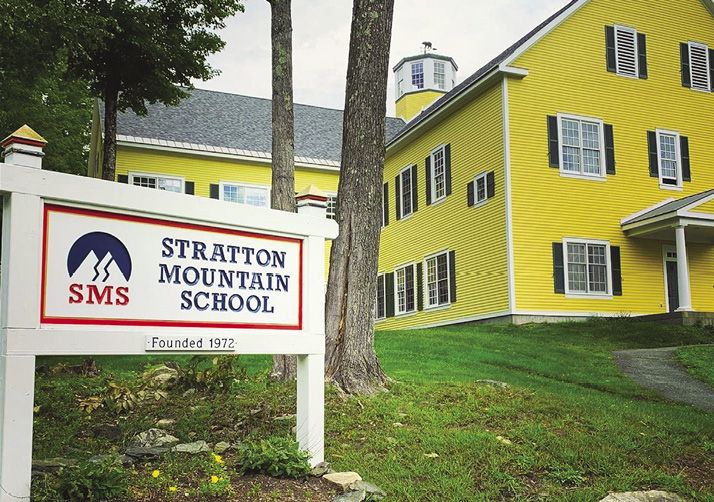
evolved from morning classes
in a church basement into a
full-time school with its first
graduating class in 1974.
Stratton Mountain School
Burke’s success did not go unnoticed. Roughly 140 miles south, at Stratton Mountain, Warren Hellman and Don Tarinelli both had young kids in the weekend junior racing program coached by T.D. McCormick, Hermann Göllner and Paul Reed. When Reed came back from the J2 state championships in 1971 he said, “You should see the Burke girls ski!”
Hellman and Tarinelli responded by starting the Stratton Mountain Winter Tutorial Program, based in their two chalets; the girls stayed at Hellman’s and the boys at the Tarinelli’s. The kids took morning classes in the basement of the Chapel of the Snows, then headed to the mountain, where the coaches had courses ready on the Slalom Glade poma. They soon switched to morning training sessions and got prime space on less crowded slopes in better conditions.
As admissions director, McCormick’s job was to fill the school, and as the Eastern Division’s J3 and J4 chairman, he knew where to find the talent. By tapping into Stratton’s social crowd, he was able to build a recruiting budget. “Peggy Lord would have a ski ball every year, with expensive tickets,” says McCormick. “That started our scholarship program.”
By 1974, SMS, now a full-time school, had its first graduating class. It included Abbi Fisher, who would become the school’s first Olympian in 1976. That same year, the school moved into the Hotel Tyrol. This new home, right at the base of the mountain, accommodated classrooms, dorms, a cafeteria and assembly space. From here, the SMS community could grow.
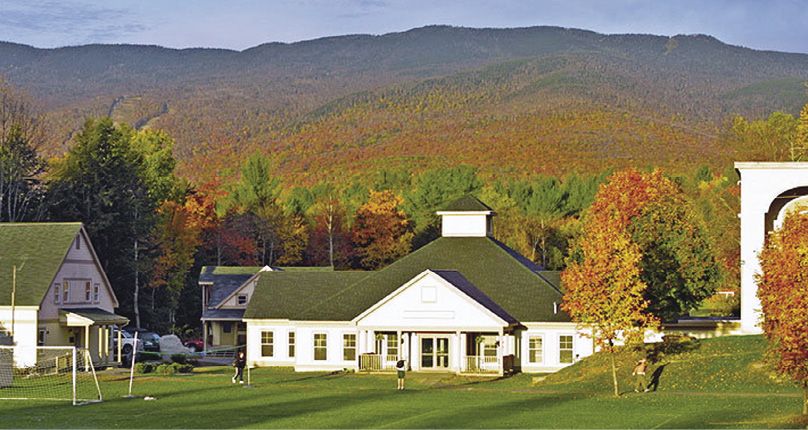
River Valley, Vermont.
Green Mountain Valley School
The successes at Burke and Stratton caught the attention of a trio of passionate ski coaches in the Mad River Valley. Al Hobart, Bill Moore and John Schultz coached kids on weekends and holidays at the three local ski areas—Mad River, Glen Ellen and Sugarbush. “It was partly our competitiveness with Burke and Stratton,” recalls Hobart. “It looked like they were going to attract all the best ski racers in the East.”
In spring 1973, the coaches decided they needed to offer the kids more. They enlisted Moore’s Middlebury classmate Ashley Cadwell, who had a degree in education, and put together a winter tutorial program. Al and his wife, Jane, had room in their house on Bragg Hill in Fayston for four students and a gym, and they rented a nearby chalet to accommodate eight more students. Jane jumped in to help with academics, Schultz’s wife, Annette, took care of feeding the kids, and the Mad River Valley School (known to the kids as “Mad Acad” was born. The next year the Schultzes opened a ski lodge five miles north in Moretown and converted the barn into a dorm and classroom space.
After three years the academy offered full-time enrollment, and houses were rented in Moretown to accommodate the growth. In 1978 a former dairy farm and farmhouse back on Bragg Hill became available. The flat land, created by a glacial moraine, offered an ideal location for a campus with athletic fields and room to grow. Ground was broken in April for three dorms that Jane had nicknamed by their rooflines—pointy Witch’s Hat, rounded Pound Cake and Clark, the plain gable. The new buildings opened on October 1. By 1980 GMVS could also claim its first Olympian: downhiller Doug Powell.
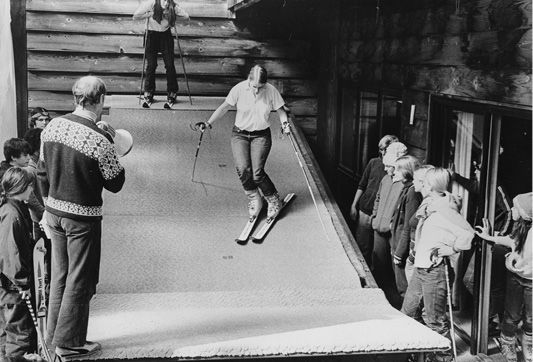
McNealus trains at Stratton Mountain
School in the mid-'70s. Hermann
Gollner photo.
Special Sauce
As the ski academies aggregated top coaches and athletes from across the country, they became development hubs for U.S. skiing, stacking U.S. Ski Team and Olympic rosters through the ’80s and ’90s. They did so, however, while retaining their unique flavors.
Chronically cash-strapped Burke embraced no-frills living and a hard work ethic, featuring double sessions of conditioning and marathon laps on the dilapidated poma. At first Witherell eschewed off-season camps on the basis of both cost and principle, while Gunderson introduced fall sports to instill team spirit and offer kids a well-rounded athletic experience. “Burke kids would play the state champs soccer game in the morning and run cross-country states in the afternoon,” he recalls. Burke’s hard work imperative is reflected in the signature Green Mountain Run, an all-school relay the entire length of Vermont. In keeping with the school’s early, egalitarian “all leaders, no leaders” motto, after winning her1985 GS World Championship, Diann Roffe returned to campus—and also to dish duty. Today, the campus features few visual accolades for famous alumni, even superstar Mikaela Shiffrin.
With Stratton’s deep Austrian connections, it was the first academy to offer pre-season training camps on the European glaciers, a practice that would ultimately become the standard for all full-time ski programs. The school also embraced multiple disciplines, starting with Nordic skiing in 1977. In 1993 SMS added snowboarding, and in 1998 Ross Powers won the school’s first Olympic medal (bronze, then gold in 2002) in that event. SMS added freeskiing to the mix in 2010 and freestyle in 2013. That same year the school established SMS T-2, a cross-country program that evolved into a premier Nordic development program for Olympians like Jessie Diggins, who won gold in 2018, silver and bronze in 2022, and the overall World Cup championship in 2021. The school has also maintained a strong presence in a wide range of off-season sports like lacrosse, cycling, baseball and soccer, in which Kristen Luckenbill won the school’s first summer Olympic medal—gold—in 2004.
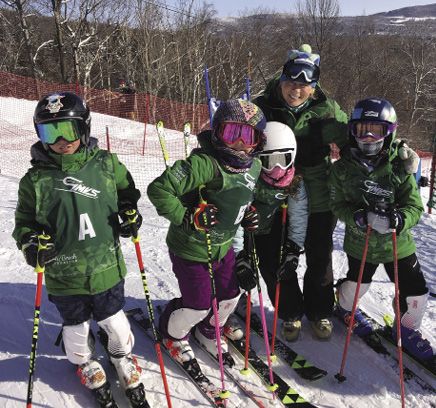
at GMVS.
When GMVS secured Inverness at Glen Ellen (now Sugarbush’s Mt. Ellen) as its dedicated training venue, the program exploited the wide-open terrain to fill a void in Eastern skiing and built a legacy of World Cup speed skiers. Among them were Doug Powell, Doug Lewis, AJ Kitt and Daron Rahlves. Rahlves was among the growing number of Western skiers who sought out grit-building Eastern racing. GMVS counterbalanced the intensity of ski racing with a well-rounded experience that included fall and spring sports as well as theater, championed by 30-year headmaster Dave Gavett. As Hobart explains, “Dave’s view was when you are ski racing you are on stage all by yourself.” GMVS’s annual fall musical remains a focal point of the school experience, connecting students with each other and with the community.
It’s All Academic
At first Gunderson and Witherell needed to work hard to sell the parents on the value of personal responsibility, time management and learning for learning’s sake rather than grades, and colleges on the validity of their education model. Soon enough, however, the ski academies became feeder schools for NCAA skiing powerhouses like Dartmouth, Middlebury and the University of Vermont, and other elite schools in New England. Jane Hobart, who taught nearly every subject at GMVS and also was a college counselor, recalls that “a highlight was the year we got kids into Harvard, Yale and Princeton.”
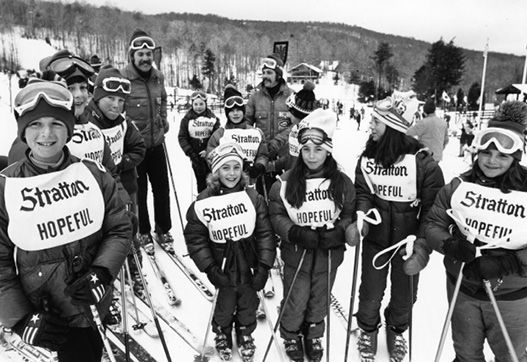
st SMS, their bibs were a reminder.
To keep up with increasing demand, the academies upgraded facilities on hill and off, and experimented with European campuses. Out of necessity, SMS took the first leap into modernization in 1999, when Intrawest’s development at Stratton forced a move from the Hotel Tyrol to a brand-new campus on World Cup Circle. SMS was already the first academy to have separate academic and athletic staffs; the modern dorm, academic and athletic buildings set a new standard for ski academies.
The other schools followed up with multimillion-dollar gyms, tuning rooms and new dorms, as well as specialized staffs to meet increased expectations for academics, athletics and a standard of care. Stratton and GMVS expanded to 144 and 135 students, respectively; Burke, meanwhile, reduced enrollment to 65 (after it ballooned to 105 in the ’90s) and refocused on Alpine racing.
Competition and Cooperation
While more academies emerged throughout New England, and battled fiercely with each other to lure and place top talent in a shrinking number of national team and NCAA roster spots, schools at bigger mountains in the West advanced their snowmaking and programming. The latter could offer longer ski seasons, as well as top-quality facilities and coaching, to meet the growing demand for year-round programming at ever-younger ages. Many of the newcomers could also partner with public and charter schools to offer more affordable alternatives to ski academy tuitions
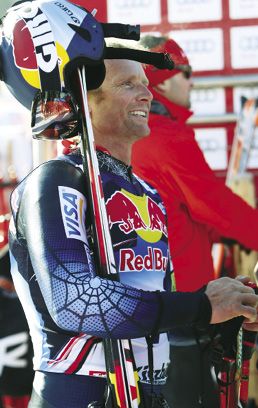
World Champion Daron Rahlves.
Ski academy tuitions mirror those of each other and other private college-prep boarding schools. Yearly tuition at BMA cost $5,400 in 1978—the equivalent of $24,000 in today’s dollars. Full board at ski academies in 2022 is more than $60,000, not including off-season and pre-season camps.
All of the academies offer significant need-based financial aid to defray the costs of tuition and travel. Nonetheless, cost control is a top concern throughout the ski racing community, especially at Eastern ski academies.
With students traveling to races much of the winter, ski academies pioneered remote learning, which meant they were prepared academically for Covid-19. The pandemic also fostered an unexpected benefit: collaboration. The Vermont academies worked together closely to advocate for ski racing within the state and to raise the level of Eastern competition.
The People
At the heart of each academy are people with long tenures who ardently believe in this educational model for building character and community, and in ski racing as a vehicle to achieving personal success beyond athletics. Willy Booker and Carson Thurber are the current headmasters—and also alums—of BMA and SMS, respectively. GMVS headmaster Tracy Keller raced for Dartmouth and previously headed Sugar Bowl Academy.
“At Burke, we’re clear that the ultimate gift is the character development and values,” Booker says. “You have to go through the crucible of trying to be excellent at this one thing.”
Anniversary Celebrations
Burke’s 50th anniversary celebration and reunion was postponed twice due to Covid and may happen next summer. Stratton’s year-long celebrations were highlighted by its recent hall of fame inductions in June. GMVS will commemorate its 50th anniversary with a reunion in June 2023. 
Olympian Edie Thys Morgan wrote about Montafon, Austria in the May-June issue of Skiing History.
Table of Contents
WORLD CHAMPIONSHIP ($3,000+)
BerkshireEast/Catamount Mountain Resorts
Gorsuch
Warren and Laurie Miller
Sport Obermeyer
Polartec
CHAMPIONSHIP ($2,000)
Fairbank Group: Bromley, Cranmore, Jiminy Peak
Hickory & Tweed
Rossignol
Snowsports Merchandising Corporation
WORLD CUP ($1,000)
Aspen Skiing Company
Atomic USA
Bogner of America
Boyne Resorts
Dale of Norway
Darn Tough Vermont
Dynastar/Lange/Look
Gordini USA Inc/Kombi LTD
Head Wintersports
Intuition Sports
Mammoth Mountain
Marker/Völkl USA
National Ski Areas Association
North Carolina Ski Areas Association
Outdoor Retailer
Ski Area Management
Ski Country Sports
Sports Specialists Ltd
Sugar Mountain Resort
Sun Valley Resort
Vintage Ski World
World Cup Supply
GOLD MEDAL ($700)
Larson's Ski & Sports
Race Place/Beast Tuning Tools
The Ski Company (Rochester NY)
Thule
SILVER MEDAL ($500)
Alta Ski Area
Boden Architecture PLLC
Dalbello Sports
Deer Valley
EcoSign Mountain Resort Planners
Elan
Fera International
Holiday Valley Resort
Hotronic USA/Wintersteiger
Kulkea
Leki
Masterfit Enterprises
McWhorter Driscoll LLC
Metropolitan New York Ski Council
Mt. Bachelor
New Jersey Ski & Snowboard Council
Nils
Russell Mace Vacation Homes
SchoellerTextil
Scott Sports
Seirus Innovations
SeniorsSkiing.com
Ski Utah
Snowbird Ski & Summer Resort
Steamboat Ski & Resort Corp
Sundance Mountain Resort
Swiss Academic Ski Club
Tecnica Group USA
Timberline Lodge and Ski Area
Trapp Family Lodge
Wendolyn Holland
Western Winter Sports Reps Association
World Pro Ski Tour


